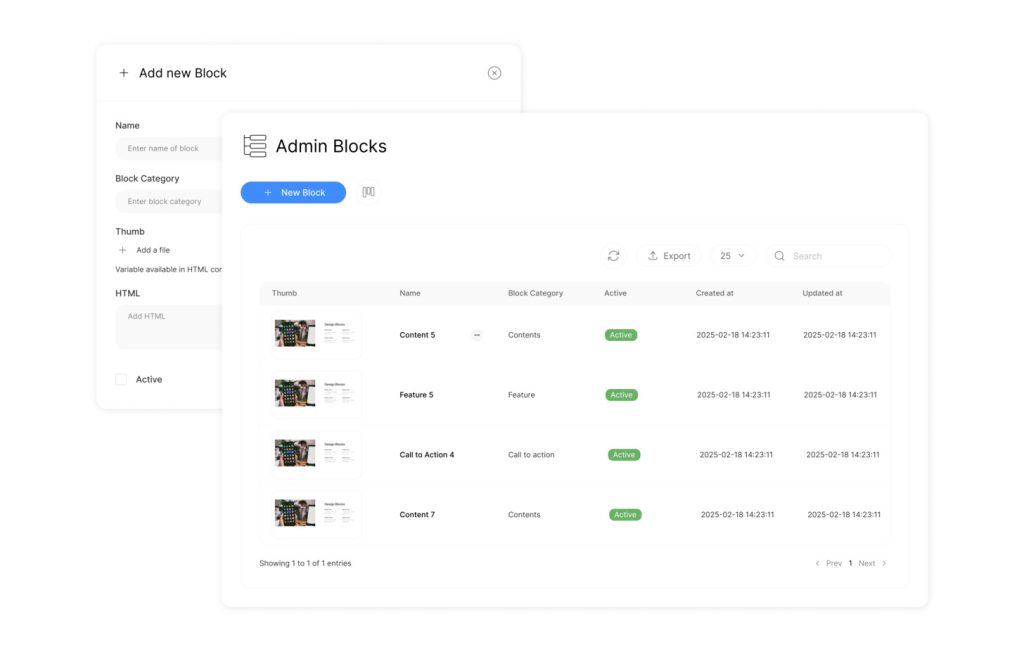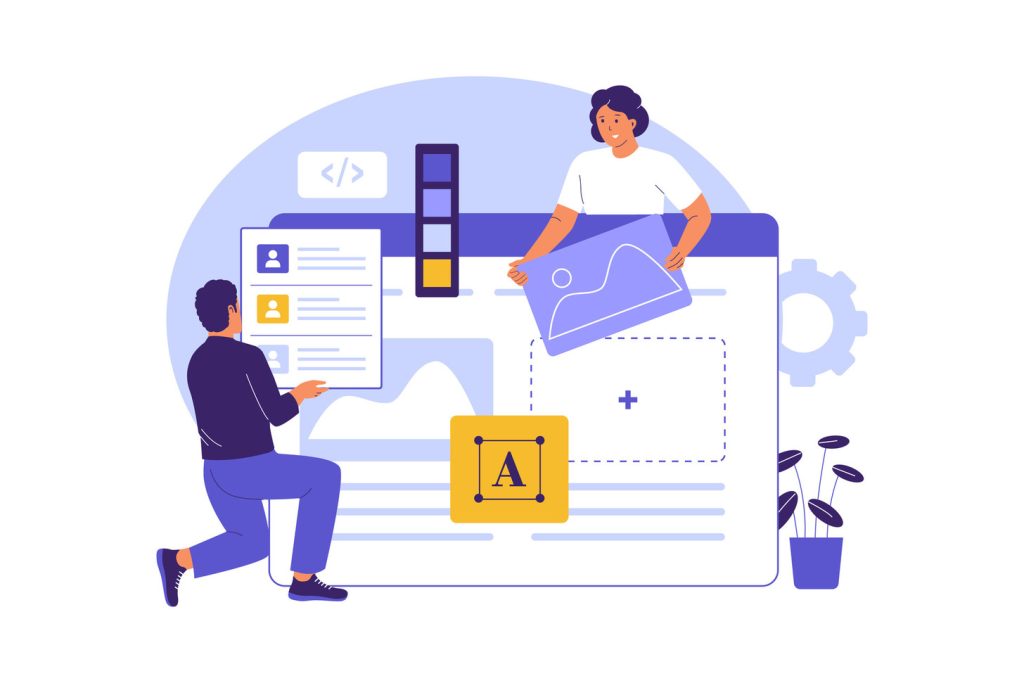Top Intuitive Drag-And-Drop Page Builder Solutions

Modern businesses demand efficient tools to create websites without complex coding. With 44% of small businesses lacking a web presence, easy-to-use platforms bridge the gap between technical limitations and polished online results. Today’s website builders prioritize speed and flexibility, enabling teams to focus on growth rather than development hurdles.
Leading tools now integrate visual drop editors that simplify design workflows. These platforms offer pre-built templates and customizable elements, allowing users to craft landing pages, portfolios, or e-commerce sites in hours. The best solutions balance robust functionality with straightforward interfaces, ensuring even beginners can achieve their vision with ease.
Choosing the right platform requires evaluating pricing, integration capabilities, and scalability. A freelance designer might prioritize creative freedom and extensive customization options, while a corporate team may need enterprise-grade security and performance. This analysis compares top-rated builders, highlighting how each addresses distinct business needs and offers the best choices for different user types.
Key Takeaways
- Modern website builders eliminate coding requirements while delivering professional results
- Pre-designed templates and drag-and-drop editors accelerate site creation
- Pricing models and scalability vary significantly across platforms
- Integration with third-party tools enhances workflow efficiency
- Mobile optimization and SEO features are critical for online success
Introduction to Intuitive Drag-And-Drop Page Builder Solutions

Creating professional websites no longer demands coding expertise. Visual drop editors empower business teams to construct polished pages through direct manipulation of elements. Popular WordPress plugins like SeedProd and Beaver Builder demonstrate how these tools accelerate project timelines — some users launch complete sites in under eight hours.
These platforms eliminate traditional barriers between concept and execution. Real-time previews let users adjust layouts while seeing immediate changes, streamlining the editing process. Third-party integrations with social media, marketing automation tools, and payment gateways extend core functionality without requiring developer intervention.
Market data reveals 62% of small companies now use visual builders for primary web development. This shift reflects growing demand for tools that combine creative freedom with operational efficiency. Modern solutions offer granular control over typography, spacing, and interactive features, rivaling custom-coded results while ensuring consistent performance and fast load times.
Key advantages include:
- Pre-configured templates adaptable to multiple industries
- Cross-device optimization ensuring consistent experience
- Version control systems for collaborative editing
As competition intensifies, leading website builders now incorporate AI-assisted layout suggestions and accessibility checkers. These advancements help business teams maintain brand consistency while scaling their online presence efficiently.
What is an Intuitive Drag-And-Drop Page Builder?
Today’s web design tools empower users to construct sites through simple visual adjustments. A website builder with drag-and-drop functionality provides a canvas where elements like text boxes, images, and forms can be positioned freely, offering unmatched ease of use and flexibility.
This approach removes technical barriers, letting teams focus on brand storytelling rather than code syntax. Real-time previews show immediate changes as users adjust layouts, creating a seamless editing process.
Unlike rigid block systems, these platforms allow pixel-perfect placement of content components. Advanced options include custom animations and dynamic features that adapt to visitor interactions.
- Unrestricted movement of elements across the workspace
- Pre-designed templates for rapid deployment
- Device-specific layout adjustments in a single interface
While block-based alternatives simplify initial setup, they limit creative control. Modern website builders strike a balance between usability and customization depth. These solutions automatically optimize pages for mobile viewing while maintaining desktop fidelity.
Key Features of the Best Website Builders

Leading platforms now prioritize adaptability and accessibility for diverse business needs. They combine robust tools with straightforward workflows, enabling teams to launch professional sites while maintaining brand consistency and fast performance.
Customization Options and Layout Flexibility
Advanced website builders provide granular control over visual elements. Users adjust grid systems, column widths, and spacing without coding. Responsive design features automatically optimize pages for mobile screens and tablets.
| Feature | Basic Builders | Premium Builders |
|---|---|---|
| Grid Adjustments | Fixed layouts | Custom breakpoints |
| Template Edits | Limited changes | Full CSS access |
| Reusable Components | Not available | Global style libraries |
Ease of Use and User-Friendly Interfaces
Top platforms feature clean dashboards with logical tool groupings. Contextual tutorials appear when users hover over complex functionality, reducing learning curves. Progressive disclosure menus hide advanced options until needed.
Smart automation streamlines repetitive tasks. Color pickers suggest palette variations based on brand logos. Layout analyzers flag spacing inconsistencies before publishing. These features help teams maintain professional standards effortlessly.
Comparing Drag-And-Drop vs. Block-Based Editors
What defines the right editing tool for your website? Visual builders split into two camps: free-form drag-and-drop systems and structured block-based platforms. Each approach serves distinct goals, from rapid deployment to brand-specific customization.
Drag-and-drop editors excel in creative control. Users place elements anywhere on pages, crafting layouts that match exact brand requirements. This method suits businesses needing unique navigation menus, interactive galleries, or custom form integrations. However, advanced functionality often demands performance optimizations to maintain loading speeds.
Block-based systems prioritize simplicity. Pre-built templates with fixed sections accelerate site creation for blogs or portfolios. While limiting design flexibility, these tools ensure mobile responsiveness and cleaner code output by default.
| Factor | Drag-and-Drop | Block-Based |
|---|---|---|
| Customization Depth | Pixel-level adjustments | Predefined layouts |
| Learning Curve | Moderate | Minimal |
| Scalability | Enterprise-ready | Basic growth |
Three critical considerations guide the choice:
- Content complexity: Multimedia-heavy pages benefit from drag-and-drop precision
- Team expertise: Non-designers achieve faster results with block systems
- Future needs: Switching platforms later can disrupt SEO and user experience
For long-term adaptability, drag-and-drop builders outperform block tools. They accommodate evolving design requirements without platform migrations. Yet, businesses focused purely on speed-to-market may find block editors sufficient for initial launches.
Top Intuitive Drag-And-Drop Page Builder Tools
Selecting the right platform transforms how companies establish their online presence. Leading solutions cater to diverse needs, from portfolio showcases to complex e-commerce operations. This analysis compares seven market leaders, highlighting their core strengths and ideal use cases.
Market Leaders at a Glance
Each platform serves specific organizational requirements. Squarespace dominates with polished templates, while Wix empowers users through granular layout control. Budget-conscious teams often choose Hostinger for its balance of essential features and affordability.
| Platform | Best For | Key Strength | Starting Price |
|---|---|---|---|
| Squarespace | Creative professionals | Design-forward templates | $16/month |
| Wix | Customization seekers | Pixel-perfect editing | $17/month |
| Hostinger | Startups | Cost-effective packages | $2.99/month |
| Canva | Single-page sites | Visual branding tools | Free (Pro: $12.99) |
Strategic Advantages by Platform
Squarespace delivers unmatched aesthetic coherence across its 150+ website themes. Photographers and architects benefit from gallery-focused layouts that highlight visual content.
Wix stands out for businesses needing tailored design solutions. Its ADI system suggests layouts based on industry-specific needs, while advanced users can modify CSS directly.
HubSpot CMS integrates tightly with CRM pipelines, though its $300/month entry cost suits enterprises already invested in their ecosystem. Agencies favor Duda for white-label capabilities when managing multiple client websites.
Post-acquisition, Weebly prioritizes Square payment integrations – 78% of its users now operate online stores. Canva’s single-page editor excels for landing pages requiring bold visuals but lacks multi-page scalability.
Intuitive Drag-And-Drop Page Builder

Businesses require website creation tools that merge simplicity with professional outcomes. Advanced platforms empower teams to craft polished landing pages and multi-section sites through visual interfaces. Real-time previews update instantly as users reposition elements, eliminating guesswork from layout adjustments.
Leading solutions support diverse content types, from image carousels to ecommerce product grids. Pre-built templates accelerate launches while allowing full customization of fonts, colors, and spacing. Third-party connectors integrate analytics tools and CRM systems directly into the editor.
Key advantages include:
- Immediate visual feedback during design modifications
- Cross-device optimization for consistent mobile/desktop displays
- Version history tracking for collaborative editing teams
These platforms balance straightforward interfaces for novices with advanced settings for developers. Granular controls over animations or form fields cater to growing business needs without platform migrations. As demands evolve, scalable plans ensure websites adapt alongside organizational growth.
Design and Customization Flexibility

Adaptable design tools prove essential for businesses aiming to stand out in competitive markets. Leading platforms now offer extensive template libraries with 170 to 357+ professional layouts spanning industries like healthcare, education, and e-commerce. These pre-built foundations accelerate project launches while maintaining room for brand-specific adjustments.
Strategic Template Selection
Solutions like SeedProd and Thrive Architect provide specialized designs for sales pages, webinar registration forms, and product displays. Teams can modify color schemes, typography, and interactive elements without coding. This flexibility ensures every website maintains unique visual identity while leveraging proven layout structures.
Instant Design Validation
Real-time editing eliminates guesswork during design iterations. Changes to spacing, images, or content blocks appear instantly, letting users refine pages with precision. Beaver Builder and Divi users report 40% faster revisions compared to traditional preview-and-update workflows.
Advanced platforms enable saving customized templates for future projects, ensuring brand consistency across all site sections. As businesses scale, these features support seamless expansion of online presence without compromising loading speeds or mobile responsiveness.

